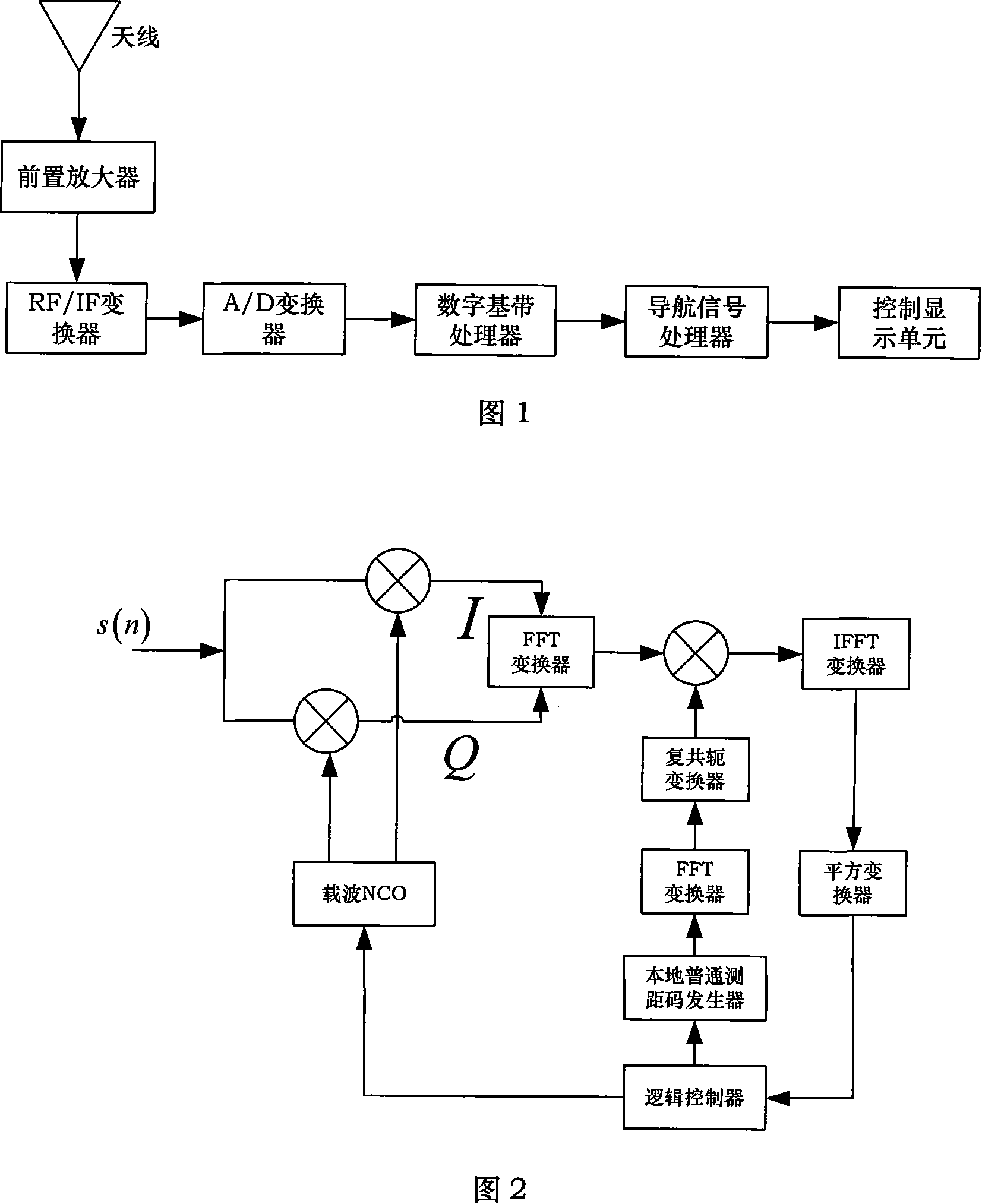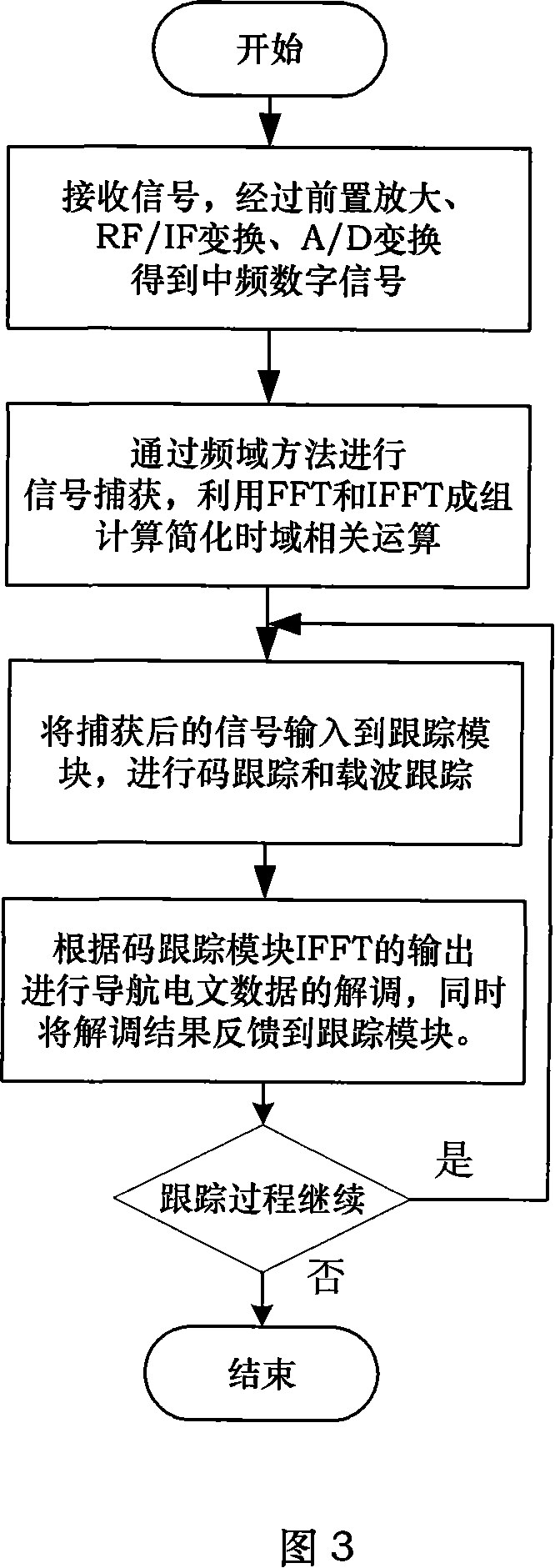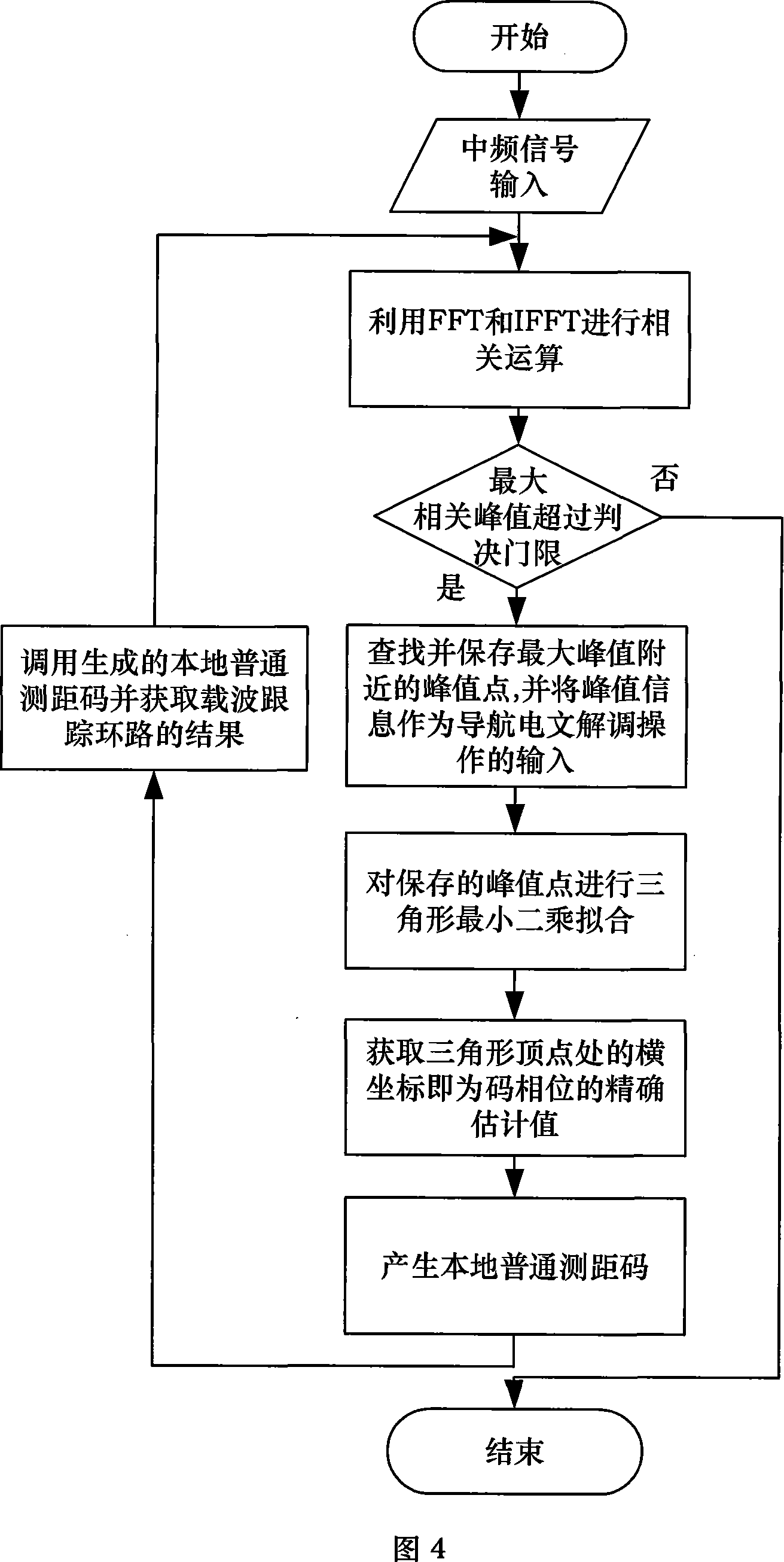Baseband signal processing method for GNSS receiver
A baseband signal processing and receiver technology, applied in the field of communication, can solve the problems of limited signal acquisition speed, weak signal processing ability, narrow tracking bandwidth, etc., to achieve integrated circuit implementation, fast operation speed, and reduce computational complexity Effect
- Summary
- Abstract
- Description
- Claims
- Application Information
AI Technical Summary
Problems solved by technology
Method used
Image
Examples
Embodiment Construction
[0036] The present invention will be further described in detail below in conjunction with the accompanying drawings.
[0037]The method is mainly applicable to the reception of the ordinary ranging code signal of the GNSS receiver, and completes the acquisition and tracking processing of the baseband signal in the frequency domain. During the capture process, FFT and IFFT calculation methods are used to perform group calculations to simplify time-domain correlation operations. In the code tracking process, first use FFT and IFFT operations to find out the positions of multiple correlation peaks, and then use the method of curve fitting to complete the accurate estimation of the code phase. In the process of carrier tracking, first determine the range of points for calculating DFT values according to the rough carrier frequency estimation value obtained during acquisition, and use the sliding DFT method to calculate the DFT values of these points, then use the interpolatio...
PUM
 Login to View More
Login to View More Abstract
Description
Claims
Application Information
 Login to View More
Login to View More - R&D
- Intellectual Property
- Life Sciences
- Materials
- Tech Scout
- Unparalleled Data Quality
- Higher Quality Content
- 60% Fewer Hallucinations
Browse by: Latest US Patents, China's latest patents, Technical Efficacy Thesaurus, Application Domain, Technology Topic, Popular Technical Reports.
© 2025 PatSnap. All rights reserved.Legal|Privacy policy|Modern Slavery Act Transparency Statement|Sitemap|About US| Contact US: help@patsnap.com



